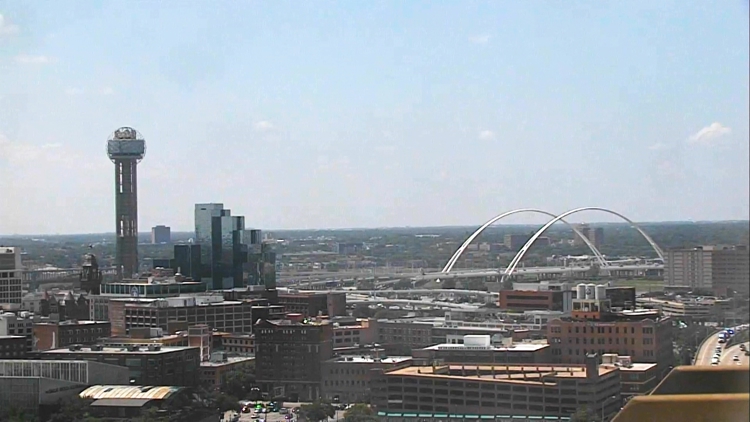DALLAS — This story was originally published by our content partners at the Dallas Business Journal. You can read the original article here.
Chefs in the Metroplex will soon be featured globally like never before as the Michelin Guide prepares to start reviewing restaurants in the Lone Star State.
Michelin announced in July it would create the first Texas version of its revered guide, with a focus on five cities. Restaurants in and around Dallas, Fort Worth, Austin, Houston and San Antonio will be eligible for its coveted star rankings, one of the most respected culinary honors. The new guide is expected to publish before the end of 2024.
For many working in kitchens in the Metroplex, the recognition is long overdue. North Texas' diverse dining landscape boasts barbecue and Tex-Mex as well as high-end steak and sushi. It's home to James Beard Award finalists as well as Texas Monthly barbecue mainstays.
But bringing Michelin to Texas also took a lot of work behind the scenes. Serious money is changing hands and the state travel board even got involved. Dallas Business Journal spoke with tourism leaders across DFW to learn how Michelin was finally brought to the state.
Initial discussions with Michelin took place just before the start of Covid-19, which put a damper on these plans, said Craig Davis, CEO of Visit Dallas, the city’s main tourism group. Conversations resumed, and became serious, in 2022, when travel in the area began returning to pre-pandemic levels.
It will cost around $900,000 to bring Michelin to Texas. The state's tourism board will put up half of that amount, with the other $450,000 split five ways between the five major metros in the guide. Visit Dallas confirmed it has pledged $90,000 a year for the next three years for its "participation fee" for the guide, which helps cover the overall cost for Michelin to be here.
"For us, it makes sense because it allows us to invest in something that would motivate people to travel," Davis said. "And that's what our goal is — to bring people from the outside to Dallas."
Michelin said it could not share the "commercial terms" of its partnership with tourism agencies for competitive reasons. It clarified that Travel Texas is working with Michelin on "marketing and promotional efforts only."
Visit Dallas looks for ways to bring visitors to the area, and the Michelin Guide serves as a "sure-fire" way to do so, Davis said.
A recent EY study found that 71% of travelers would increase their spending if a Michelin Guide selection existed in a city, and over 57% said they would extend their stay at a city with a Michelin-starred restaurant.
Dallas has evolved into a mature, sophisticated city, known for its rooftop pools and bars as well as its robust arts and culture scene as exemplified by the burgeoning Arts District. Among the Texas cities selected by Michelin, Dallas is perhaps most recognized for its fine dining options and elevated, sometimes over-the-top food options.
"The guide fits right along with this image," Davis said. "I bet that it may have been assumed in some circles that we already were Michelin."
Food is also an integral part of Fort Worth’s tourism scene, said Mitch Whitten, chief operating officer of Visit Fort Worth, which also pledged $90,000 a year for inclusion in Michelin Guide Texas. One out of three tourism dollars in Fort Worth goes to food and beverage, which includes restaurants and bars, he said.
"Michelin provides another opportunity to layer in a special international recognition," Whitten said. "Michelin has been recognized for many years as a mark of excellence, and I think that as Fort Worth has grown, we have more offerings than ever before for all tastes."
Fort Worth's history is intertwined with cattle and meat. But it's developed a sophisticated modern food and beverage scene as well, and its annual three-day food and wine festival draws people from around the state.
Its elevated hospitality scene includes businesses such as Hotel Drover, near the Stockyards, which was recently named the top luxury hotel in DFW by Travel + Leisure readers.
With all that said, will the Michelin Guide be a good thing for Texas? In an era of rising food prices and decreased spending on eating out, some have voiced concern about striving for stars rather than providing a quality dining experience.
Davis does not envision drawbacks as he believes the brand’s presence itself will allow businesses to "skyrocket."
"It's such a strong brand that I think any restaurant that's trying to strive for a Michelin rating, and if they receive one, it will mean that they will be spoken about or considered in a very rarefied group of restaurants around the globe," he said.
Whitten agreed, adding restaurants are often places to find and build community. He noted the restaurant industry runs on thin margins, and those involved work long hours and with less-than-extraordinary pay.
"It's so rewarding for people in that business to be recognized because they work hard every day to feed our community," he said.
Whitten added the investment to bring Michelin here is a long-term strategy that will hopefully bring the culinary community together.
"It’s like buying a single billboard for a year, and I think the reach will be great," he said. "It will celebrate Texas food — both things that have been here a long time and new tastes of Texas."



